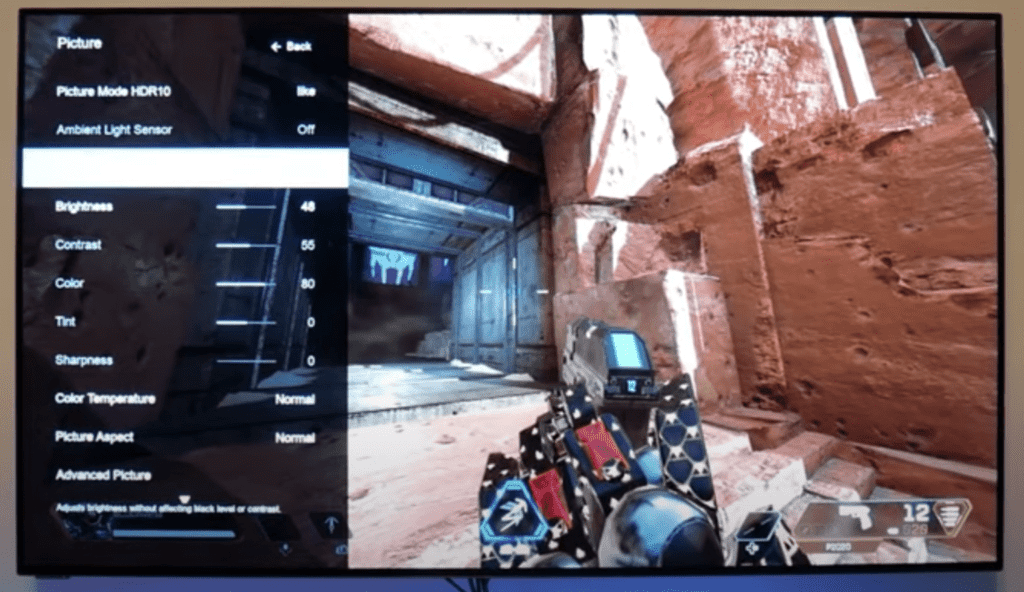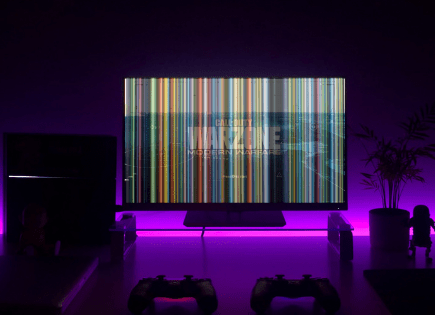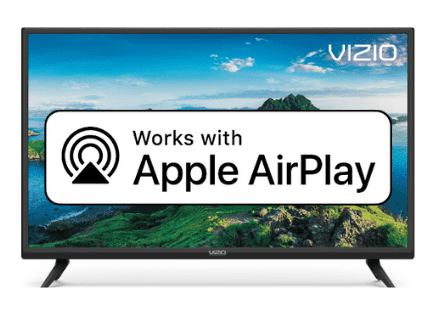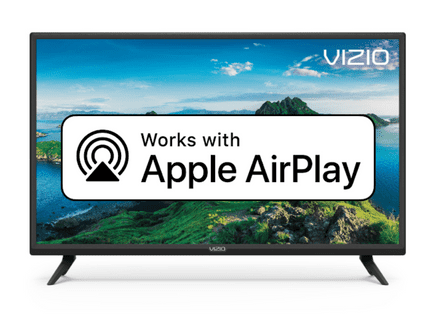
Vizio TV Flickering (Try This Fix First!)
For some reason many Vizio TVs eventually run into a similar problem – the screen flickers.
There are countless cases of Vizio TV owners who say they’ve had this problem – some say it’s been an issue they’ve dealt with for multiple years!
Luckily there is a very easy fix that should resolve about 80% or so of Vizio TV flickering complaints.
Vizio TV Flickering
If your Vizio TV is flickering, you need to reset it. Unplug your TV and wait a full 60 seconds. While the TV is unplugged, press and hold the power button for 30 seconds. After the 60 seconds are up, plug your Vizio TV back in and the flickering should stop.
Unplug Vizio TV from the wall
While this fix sounds obvious, unplugging your Vizio TV from the wall socket is the most common way to get it to stop flickering.

The key here is to actually wait the FULL 60 seconds. Have a little bit of patience and make sure it’s been at least a minute before plugging it back in.
While the TV is unplugged, find and hold the power button on your Vizio TV for 30 seconds. Make sure you are holding the power button on your TV, and not your remote!
This will help to drain any residual power left in the TV and allows the TV to soft reset itself. This is different than simply switching the remote on and off!
Once you plug the TV back in after the 60 seconds, you should see it power back up no problem and your screen should no longer be flickering!
Adjust Picture Settings on Vizio TV
Often the cause of your Vizio TV flickering on and off has to do with your TV’s picture settings. The first thing you should try is resetting the picture mode.
Click the MENU button on your remote and then go to PICTURE > MORE > Reset picture mode. If you don’t see this option on your model Vizio TV, don’t worry, there are other adjustments you can try.
Go back to PICTURE and make a few adjustments to the various settings here.

I would start with Brightness. Turn this down to about 90%. If your TV has Backlight Control, try turning this down 5-10% as well.
You can also try turning OFF the Ambient Light Sensor.
If none of this is working, try out a few different Picture Modes. Just toggle between them and use your TV on the new mode for a couple of minutes.
Hopefully you find one that fixes your problem.
Change the Video Source
Try testing your Vizio TV using a different “video source” (or input). The issue could very well be the result of an external device, or a cable connecting to your TV.
For example, flickering can happen when your TV receives corrupted frames from a broadcast that you’re streaming.
At the very least, this step will help you identify if the issue is truly with your Vizio TV, or if it’s something else (like your Firestick, Roku, or other connected, streaming device).
Inspect all connections
Be on the lookout for loose connections, bent wires, or damaged cords.
If you’re noticing the flickering only happens when your TV is using a certain input, that’s a huge clue as to which connections are failing.
For example, if your TV only flickers while playing a video game, you’ll want to check all of the cords associated with the console.
HDMI cords in particular are notorious for causing problems. Bad HDMI connections come in a few forms:
- Loose HDMI connection
- Faulty HDMI port
- Bad HDMI cable
If disconnecting and reconnecting didn’t fix the TV flickering, you should:
- Try using a different HDMI port on your TV
- Try using a different HDMI cable
However, if the flickering is only happening when you’re using cable TV, then you’ll want to check the wires attached to the cable box instead.
Luckily, these types of wires don’t cost a lot of money to replace these days.
Update Vizio TV OS
Your Vizio TV can run into a lot of issues if the software isn’t up to date. To correct this problem, simply check for any new Vizio TV OS updates.
All you need to do is look for the newest firmware update available for your TV model. Most of the time these updates happen automatically, but occasionally they get missed.
To update your Vizio TV’s firmware, turn on your TV and click “Menu” on your remote. Then scroll down and select “System”.
You should see “Check for Updates”, click on it.

Your TV will now automatically start to look for any available updates. If there is a new one, your TV will install it for you.
You’ll want to ensure you update your Vizio TV often to keep up with the newest software!
Factory reset Vizio TV
If updating the OS didn’t resolve your flickering problems, it’s time for a full factory reset.
With the TV powered on (hopefully unplugging it or removing the remote batteries was able to temporarily power the TV) click the Menu button.
Within the menu there should be a “System” option, click it.
Then find “Reset & Admin” and “Reset TV to Factory Defaults”. Sometimes the Vizio TV will ask for a code before resetting the TV. If it does the default code is four zeros, 0000.
This will essentially restore your Vizio TV to the settings it had on the day you purchased the television.
Factory reset Vizio TV without remote
If for whatever reason you do not have access to your TV’s remote, you can still factory reset your Vizio TV.
To do this find the power button on your TV. Depending on the model you have this may be on the right hand side, left hand side, or very bottom of the device.
With the TV on, press and hold the volume down and source buttons at the same time. After a few seconds your TV will tell you to press and hold the input button.
Press and hold the input button for at least 10 seconds.
This will turn off the TV, reboot it and factory reset it. The reboot and reset process can take about a minute or so.
At this point you should have fully resolved your flickering issues, but just in case you haven’t, I’ve included a few additional steps worth trying before calling it quits.
Consider the room’s lighting levels
Believe it or not, TV screens are actually always flickering. But it typically happens so fast that under normal circumstances, you can’t even tell!
However, certain extreme lighting conditions can make these refresh rates noticeable, which would make the TV appear to be flickering. To fix it, either brighten or darken the room.
You also can also try to fix this problem by adjusting your TV’s brightness settings.
This can take a bit of experimentation, so stick with it for a bit before moving on.
Investigate internal hardware problems
Screen flicker issues could be coming from INSIDE of your Vizio TV.
If you haven’t been able to determine what’s causing the flickering yet, then an electrical component inside your TV is probably wearing down (like the ribbons, for instance).
You’ll want to try all of the other troubleshooting options before deciding that this is the problem!
Most likely, you won’t be able to fix this type of problem on your own (unless you’re a trained professional). It’s probably best to take your TV in for repair, or consider buying a replacement.
If this is a newer TV, you may even have a warranty still available for it!
That said, if you’re still feeling ambitious, this video is a good starting point:
Check Vizio TV warranty
This is always a last-ditch effort, but if you simply cannot get your Vizio TV to stop flickering, you should see if you have an active warranty on your TV.
After you describe what the issue is and Vizio makes their determination of whether or not it is covered under warranty, they will either repair or replace your TV.
They even offer in-home services if this ends up being covered under your warranty. It’s worth a shot!
Conclusion
Vizio TV’s can be finicky when it comes to flickering. If your Vizio TV is flickering, try these fixes in this order:
- Unplug Vizio TV from the wall
- Reset your Vizio TV Picture Settings
- Adjust Brightness and Backlight Control Settings
- Turn off Ambient Light Sensor
- Try various Picture Modes
- Try different Video Sources and inspect all connections
- Update Vizio TV OS
- Factory reset Vizio TV, with or without a remote
- Consider the room’s lighting levels
- Investigate internal hardware problems
If you found a fix that worked for you, be sure to let us know in the comments section.




